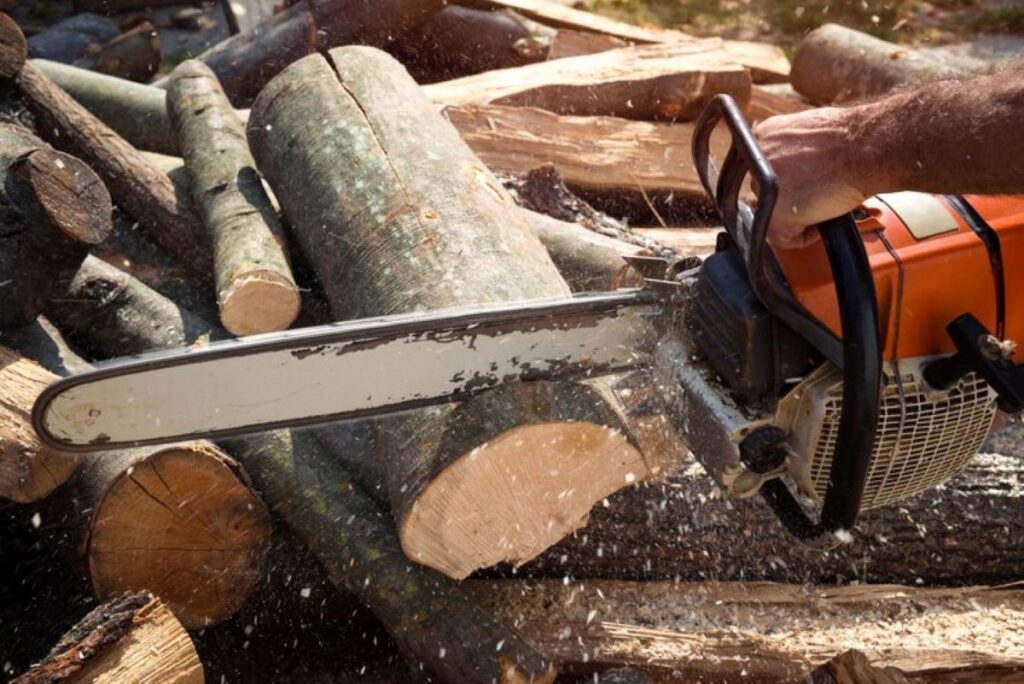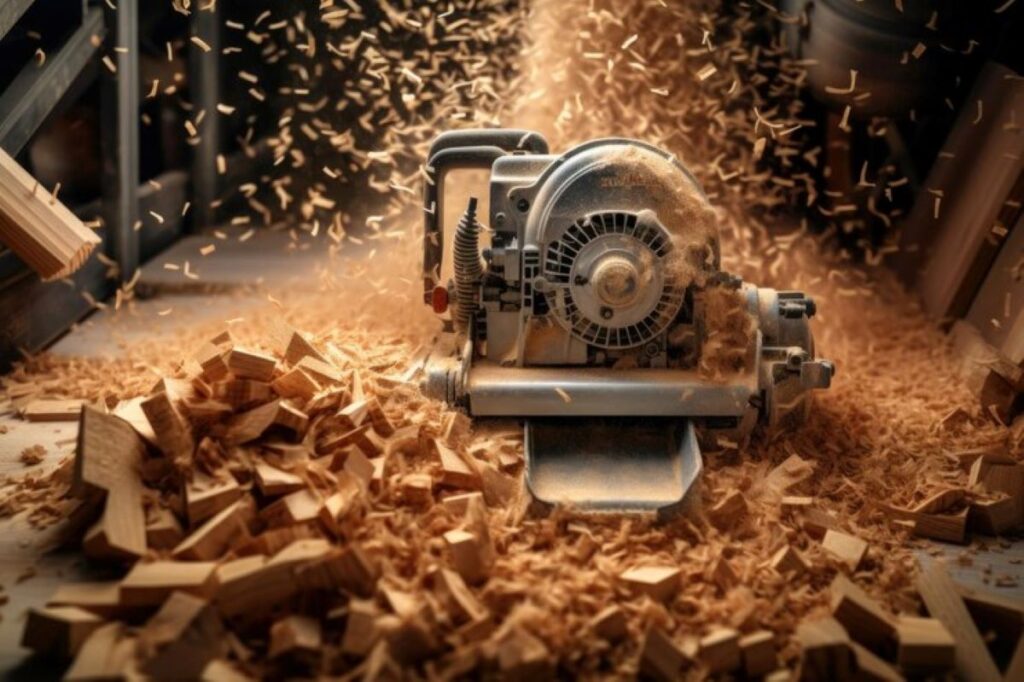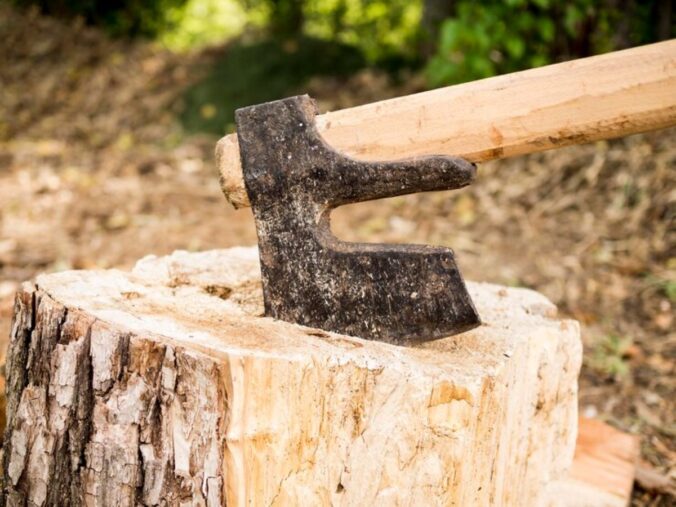Stump grinding is a common practice in the field of arboriculture, often employed after a tree has been felled. This process involves the removal of the tree stump and its roots, transforming them into wood chips or mulch. Understanding stump grinding is essential for homeowners and landscapers alike, particularly in Australia, where tree management plays a significant role in maintaining the health and aesthetics of gardens and outdoor spaces.
Understanding Stump Grinding
Stump grinding is not merely about cutting a tree stump down to ground level; it is a comprehensive process that addresses the stump and the root system beneath the surface. The primary goal is to eliminate any remaining parts of the tree that could pose hazards or hinder landscaping efforts. By grinding the stump, the area can be repurposed for new planting, paving, or simply to enhance the overall appearance of the landscape. In addition to these practical benefits, stump grinding can also play a significant role in the overall health of your garden. By removing the stump, you prevent any potential diseases or pests that may linger in the decaying wood from affecting other plants in your garden.
What Happens During Stump Grinding?
During the Stump Grinding Service, a specialised machine known as a stump grinder is used. This machine features a rotating blade that grinds the stump into small wood chips, typically to a depth of around 15-30 centimetres below the ground. The chips produced can be left on-site to decompose naturally or removed for disposal, depending on the homeowner’s preference. The wood chips can also serve a dual purpose; they can be used as mulch in other areas of the garden, helping to retain moisture and suppress weeds, thus contributing to a more sustainable gardening practice.
The stump grinder is manoeuvred over the stump, and as the blade rotates, it chips away at the wood. This process is efficient and can often be completed within a few hours, depending on the size of the stump. The operator must have a keen understanding of the machine and the surrounding area to ensure safety and effectiveness. Additionally, it is important to assess the proximity of any underground utilities before commencing the grinding process, as this can prevent costly damages and ensure a smooth operation.
Benefits of Stump Grinding
Stump grinding offers numerous advantages beyond mere aesthetics. One of the primary benefits is the prevention of potential hazards. Leftover stumps can be tripping hazards, especially in gardens where children or pets play. Additionally, stumps can attract pests such as termites or beetles, which may spread to healthy trees nearby. By removing these stumps, homeowners can create a safer environment for their families and pets, while also safeguarding their other plants from invasive pests.
Moreover, grinding the stump allows for better utilisation of the space. Homeowners can replant new trees, install pathways, or create flower beds without the obstruction of an unsightly stump. This process also promotes healthier soil, as the decomposing wood chips can enrich the ground, providing nutrients for new plant growth. Furthermore, the removal of the stump can enhance the overall value of the property, making it more appealing to potential buyers. A well-maintained landscape not only improves curb appeal but also reflects the care and attention given to the property, which can be a significant selling point in the competitive real estate market.
The Stump Grinding Process
Understanding the step-by-step process of stump grinding can demystify the operation and help homeowners appreciate the care taken in their landscape management. The process typically involves several key stages, each crucial for a successful outcome.
Initial Assessment
Before any grinding begins, an initial assessment of the site is conducted. This involves evaluating the size of the stump, the depth of the roots, and the surrounding landscape. The operator will also check for any underground utilities, as safety is paramount during this operation.
This assessment helps determine the appropriate equipment needed and the best approach for grinding the stump. It also allows for planning around any obstacles, such as nearby plants or structures that could be damaged during the process.
Preparation of the Area
Once the assessment is complete, the area surrounding the stump is prepared. This may involve clearing away debris, rocks, or any other obstructions that could interfere with the grinding process. Ensuring a clean work area not only enhances safety but also improves the efficiency of the operation.
In some cases, homeowners may wish to mark the boundaries of their garden beds or other landscaping features to ensure they are preserved during the grinding process. This preparation phase is essential for a smooth operation and to achieve the desired results.

Grinding the Stump
With everything in place, the actual grinding can begin. The stump grinder is positioned over the stump, and the operator carefully lowers the blade to start the grinding process. The machine is typically operated in a back-and-forth motion to ensure that the entire stump is ground down evenly.
As the grinding progresses, the operator will monitor the depth and adjust the machine accordingly to reach the desired level. This meticulous approach ensures that the stump is ground down effectively, leaving behind a manageable amount of wood chips.
Post-Grinding Considerations
After the stump has been ground down, there are several considerations to keep in mind. While the immediate task of stump removal is complete, the area may still require some attention to ensure it integrates seamlessly into the surrounding landscape.
Dealing with Wood Chips
The wood chips produced during the grinding process can be used in various ways. Many homeowners choose to leave the chips on-site, using them as mulch for garden beds or pathways. This not only recycles the material but also provides a natural aesthetic to the landscape.
Alternatively, if the volume of chips is excessive or if the homeowner prefers a different mulch type, the chips can be removed for disposal. Some companies may offer this service as part of their stump grinding package, ensuring a tidy finish to the job.
Soil Preparation and Replanting
Once the stump has been ground and any excess chips dealt with, the next step is to prepare the soil for replanting or landscaping. The area should be levelled and any remaining roots removed to create a clean slate for new growth.
Homeowners can then choose to plant new trees, shrubs, or flowers, enhancing the garden’s appeal. The decomposed wood chips will enrich the soil, providing a nutrient-rich environment for new plants to thrive.
Ongoing Maintenance
After stump grinding and replanting, ongoing maintenance is crucial to ensure the health of the new plants and the overall landscape. Regular watering, mulching, and monitoring for pests will help establish a thriving garden. Additionally, it is advisable to keep an eye on the area for any signs of regrowth from the old stump, as some species may attempt to sprout new shoots.
Choosing a Stump Grinding Service
When it comes to stump grinding, selecting the right service provider is essential. Not all companies offer the same level of expertise or equipment, so it is important to do thorough research before making a decision.
What to Look For
When choosing a stump grinding service, consider factors such as experience, equipment quality, and customer reviews. A reputable company will have a proven track record of successful stump removals and satisfied customers.
Additionally, inquire about the safety measures the company employs, as well as their insurance coverage. This ensures that both the workers and your property are protected during the grinding process.
Cost Considerations
The cost of stump grinding can vary significantly based on several factors, including the size of the stump, the complexity of the job, and the location. Typically, companies will provide a quote based on these parameters, so it is advisable to obtain multiple quotes to compare prices and services.
While it may be tempting to opt for the cheapest option, it is crucial to consider the quality of service as well. Investing in a reputable company can save money in the long run by ensuring the job is done correctly and safely.

Conclusion
Stump grinding is a vital service for maintaining the safety and aesthetics of outdoor spaces. By understanding the process and its benefits, homeowners can make informed decisions about their landscaping needs. Whether it’s for safety, aesthetics, or preparing for new plantings, stump grinding offers a practical solution for dealing with unwanted tree remnants.
With the right service provider, stump grinding can be a straightforward and efficient process, paving the way for a beautiful and functional landscape. Embracing this practice not only enhances the beauty of gardens but also promotes a healthier environment for future growth.
Related : How Often Should You Schedule Tree Pruning Services?

Leave a Reply